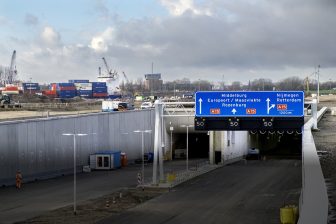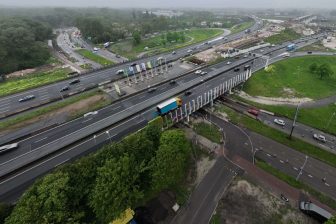More safety on EU roads
Equal treatment of resident and non-resident drivers
Brussels, Belgium – The Commission 2008-03-19 adopted a proposal for a Directive aimed at facilitating the cross-border prosecution of traffic offences which imperil road safety. Technical measures and legal instruments are to be put in place which will enable EU drivers to be identified and thus prosecuted for offences committed in a Member State other than the one where his or her vehicle is registered. This will make an appreciable difference to road safety in Europe by bringing about a positive change of behaviour in both non-resident and resident drivers. It will also end the unequal treatment which often exists between these two groups of road users.
"Road safety is everyone’s business and a priority for the Commission. In 2001 we set ourselves the goal of reducing by half the number of deaths on our roads over a ten-year period. If we are to reach this target, we need to make additional efforts now. The draft Directive that we have just adopted is a very important component in the suite of measures we are taking to improve safety on Europe’s roads", said Jacques Barrot, Vice-President of the Commission and responsible for transport.
As things stand today, a driver committing an offence under the highway code in a car registered in another country of the European Union evades prosecution, with very few exceptions, because of the difficulty of identifying them or of being able to check the address to which the vehicle is registered. This evasion of the law not only jeopardises road safety but is also discriminatory with respect to residents committing similar offences, who are exposed to penalties.
To remedy this situation, the Commission would like to see a system introduced within the EU which will make it easier to deal across national borders with offences that are frequently the cause of accidents. A European network for the electronic exchange of data will make it possible to send notices of offences to other countries. Although this will require Member States to set up appropriate administrative instruments, it will result in a simpler procedure than today’s manual approach.
The proposed Directive will cover four types of road traffic offence: speeding, drink-driving, not wearing a seat belt and failing to stop at a red light. These four offences are the leading causes of accidents and road deaths: they are involved in almost 75% of all road deaths.
Since 2001, the EU’s goal in the field of road safety has been to halve the number of victims of fatal accidents in ten years. In that year (2001) 54 000 people were killed on the roads of the 27 countries which currently belong to the Union. In 2007, for the first time since 2001, there was no annual progress in cutting the number of deaths on the roads: it was still 43 000. This figure is equivalent to five medium-sized passenger aircraft crashing in Europe every week. Over the period from 2001 to 2007 the number of deaths fell by 20%, but a reduction of 37% would have been necessary to achieve the goal set for 2010.
In October 2003 the Commission adopted a Recommendation dealing with best practice on enforcement in the field of road safety (2004/345/EC). The trend in accidents shows that this non-coercive instrument is not enough to achieve results. Except in very rare cases, current bilateral agreements have had no effect. Adopting an effective system of cross-border prosecution of traffic offences should help to make an appreciable reduction in the current number of people killed in road accidents.
U las zojuist één van de gratis premium artikelen
Onbeperkt lezen? Profiteer nu van de introductieaanbieding voor € 10,- per maand.
Bent u al abonnee?



